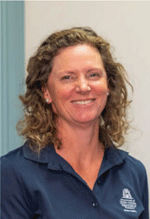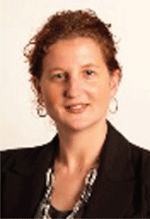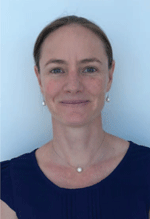Western Australian marine oil pollution risk assessment: identification of protection priorities
Raphael Morgan A E , Emily Gifford B , Annette Jacobs C and Kate Swain DA Advisian, 600 Murray Street, West Perth, WA 6005, Australia.
B Department of Transport, 1 Essex Street, Fremantle 6160, Australia.
C GFG Alliance, Port Augusta Road, Whyalla, SA 5600, Australia.
D Woodside Energy Ltd, Mia Yellagonga, Karlak, 11 Mount Street, Perth, WA 6000, Australia.
E Corresponding author. Email: Raphael.morgan@advisian.com
The APPEA Journal 59(2) 657-662 https://doi.org/10.1071/AJ18203
Accepted: 12 March 2019 Published: 17 June 2019
Abstract
The Western Australian Department of Transport (DoT) is the hazard management agency (HMA) for marine oil pollution in Western Australia (WA). DoT initiated the WA marine oil pollution risk assessment (WAMOPRA), a detailed assessment of oil spill risk in Western Australian State waters. It comprised two components. The first component evaluated protection priorities of the receiving environment to assess potential consequences of marine oil pollution. The second component assessed the likelihood, size, location and type of marine oil pollution. Protection priority outputs from component one were modelled with spill risk from component two, to give an overall risk profile for the State. For management purposes, State waters were divided into seven zones and smaller shoreline cells (~10 km × ~20 km). Geospatial datasets representing the various receptors identified were collated and grouped into the following five categories: Protected fauna; Protection areas; Cultural heritage; Economic; and Social, amenity and recreation. Using a multi-criteria analysis approach, the spatial data layers for each receptor identified were assigned a ranking from one (very low priority) to five (very high priority) for protection. The effects of both floating and dissolved hydrocarbons were ranked. These rankings were then used to produce a map showing very low to very high priorities of the shoreline cells for each category. The outcome of this project is the largest single assessment of protection priorities (~13 000 km of coastline), undertaken across a highly variable coastline, using a standard and repeatable approach that can be applied across Australia.
Keywords: coastal assessment, hazard management, marine pollution, multi-criteria analysis, oil spill, pollution vulnerability ranking, risk assessment.

Raphael Morgan graduated from the Universite Libre de Bruxelles, Belgium, in 2004 with a PhD in Marine Biology. His working career spans 15 years, including 12 years as an environmental consultant and he has Australian and international experience in marine ecology. As a Lead Environmental Scientist and Certified Environmental Practitioner, Raphael has an excellent understanding of the environmental and marine impact assessment process in Australia. His skills in environmental and marine impact assessments and management have been developed across large and complex projects through all stages of project development, from the planning stages (e.g. feasibility and options assessment, environmental impact assessment and management) to the construction and operational stages (e.g. environmental monitoring). |

Emily Gifford graduated from Murdoch University in 1997 with a Bachelor of Science (Honours) and a Double Major in Biology and Environmental Science. She developed diverse skills as a consulting marine scientist over 15 years, working at RPS Environment, then Apache Energy. Focus areas during this period include environmental legislation and regulatory processes, environmental impact assessment and tropical benthic ecology. In 2015, Emily moved to Maritime Environmental Emergency Response at the Department of Transport, where she currently leads the oil spill planning, intelligence and environment functions. Emily is currently applying learnings from the risk assessment in order to aid Western Australia’s marine oil pollution preparedness. |

Annette Jacobs holds a Bachelor of Science (Honours) from Rhodes University (South Africa). Annette has gained hydrogeological, environmental science and project-delivery experience in a range of industries including ports, mining and major transport infrastructure. Since graduation in 2001, she has developed specialist technical knowledge of environmental impact assessments and regulatory approvals processes, geographic information systems (GIS) and environmental risk mitigation and management. Between 2009 and 2018, Annette worked for WorleyParsons/Advisian in Perth, ultimately in the role of Principal Consultant. She currently works for GFG Alliance at the Liberty Primary Steel division in Whyalla, South Australia, in the role of Improvement Engineer and Environmental Advisor. |

Kate Swain graduated from the University of Western Australia as an Environmental Engineer (Honours) in 2009. She worked for 9 years at WorleyParsons/Advisian, before joining Woodside as an Environment Advisor, where she is currently working in the Development division. She has supported multiple marine and coastal surveys for marine mapping, impact assessments and impact monitoring across WA during her career, predominantly to support environmental approvals. This led to extensive work preparing environment plans and oil pollution emergency plans for oil and gas and mining operators where her understanding of marine oil pollution impacts in WA, structure of geospatial datasets, risk assessment processes and engineering problem solving were keenly applied to the WAMOPRA project. She is currently applying her experience to support offshore decommissioning projects predominantly located in Commonwealth waters off WA. |
References
Gilbert, T. D. (1999). Oil spills in the Australian marine environment: environmental consequences and response technologies. In ‘Proceedings of the Australian Oil and Gas Conference’, Perth, Western Australia, 22–23 April 1999.AMSA (2016). ‘National Plan for Maritime Environmental Emergencies.’ (Australian Maritime Safety Authority)


